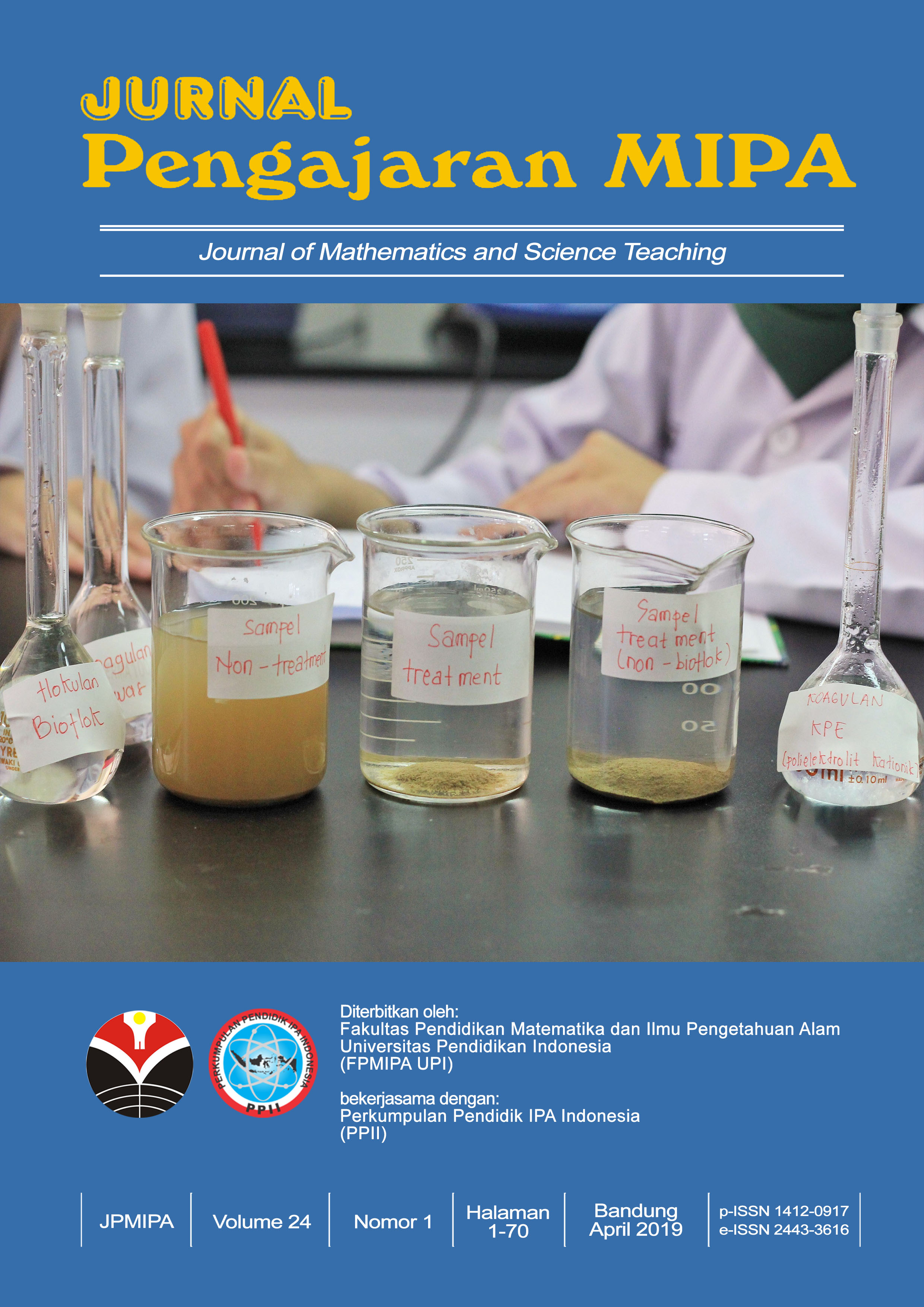KAJIAN TERHADAP METODE DAN PENDEKATAN PEMBELAJARAN BIOLOGI DI SMA: KESENJANGAN DALAM PEMBELAJARAN DI KELAS
Abstract
Keywords
Full Text:
PDFReferences
Ben-Peretz, M. (2000). When Teaching Changes, Can Teacher Education Be Far Behind?, Prospects, Vol. XXX, No. 2: 215-224.
Chauhan, S. S., (1979), Inovations in Teaching Learning Process, Vikas Publishing House PVT Ltd, New Delhi.
Dahar, R. W., (1996), Teori-teori Belajar, Departemen Pendidikan dan Kebudayaan, Jakarta.
Heyneman, S. P. & S. Todoric-Bebic, (2000), A Renewed Sense For The Purposes of Schooling: The Challenges of Education and Social Cohesion in Asia, Africa, Latin America, Europe and Central Asia, Prospects, Vol. XXX, No. 2: 144-166.
Howe, R. W. (1990), Trends and Issue in Science Education: Curriculum and Instruction, ERIC Clearinghaouse for Science, Mathematics and Environmental Education, Ohio.
Joyce, B., M. Weil, & E. Calhoun, (2000), Models of Teaching, 6th Edition, Allyn and Bacon, Singapore.
Rahmat A, S. Redjeki, dan Riandi (2008), Kajian Pembelajaran Biologi di Sekolah Menengah Atas: Kesulitan siswa dalam pembelajaran, Jurnal Pendidikan dan Pembelajaran, Vol. 6, No. 2: 236-247.
Rustaman, N. Y., (2000), Strategi Belajar Mengajar Biologi, Jurusan Pendidikan Biologi, FPMIPA UPI, Bandung: Tidak diterbitkan.
Semiawan, C. R. dan Soedijarto (1991), Mencari Strategi Pengembangan Pendidikan Nasional Menjelang Abad XXI, Jakarta, PT Gramedia Widiasarana Indonesia.
Slameto, (1995), Belajar dan Faktor-Faktor yang Mempengaruhinya, Jakarta, PT Rineka Cipta
DOI: https://doi.org/10.18269/jpmipa.v15i1.35985
Refbacks
- There are currently no refbacks.
Copyright (c) 2021 Jurnal Pengajaran MIPA

This work is licensed under a Creative Commons Attribution-ShareAlike 4.0 International License.
JPMIPA http://ejournal.upi.edu/index.php/jpmipa/index is licensed under a Creative Commons Attribution-ShareAlike 4.0 International License
Jurnal Pengajaran Matematika dan Ilmu Pengetahuan Alam (JPMIPA) or Journal of Mathematics and Science Teaching
All rights reserverd. pISSN 1412-0917 eISSN 2443-3616
Copyright © Faculty of Mathematics and Science Education (FPMIPA) Universitas Pendidikan Indonesia (UPI)
View JPMIPA Stats









